Abstract
BACKGROUND. The National Commission on Correctional Health Care recommends that medical screening, including tests for syphilis and other sexually transmitted diseases, be performed by the 14th day after initial booking procedures. Because the average length of stay in detention is usually less than 14 days, most detainees are not screened or treated for asymptomatic communicable diseases. METHODS. In order to determine the incidence and prevalence of syphilis among those booked through a large county jail, a rapid screening procedure to test newly incarcerated inmates and treat those infected was implemented over a 3-week period. RESULTS. Among 6309 detainees eligible for testing during the 3-week period of the study, 129 (2%) were diagnosed with syphilis. During the preceding month when only those reporting symptoms or high-risk behaviors were screened, 20 cases were diagnosed. The sensitivity and predictive value of self-reported risk factors for syphilis infection were low. Among the first 110 diagnosed cases, 17 (15.5%) were released within 3 days and 86 (78%) were released within 6 days. CONCLUSIONS. If screening and treatment for syphilis are delayed until the 14th day after booking, the majority of infected inmates will be released prior to evaluation and treatment. Rapid screening and treatment for selected sexually transmitted diseases are likely to be an effective public health measure when implemented in custody settings.
Full text
PDF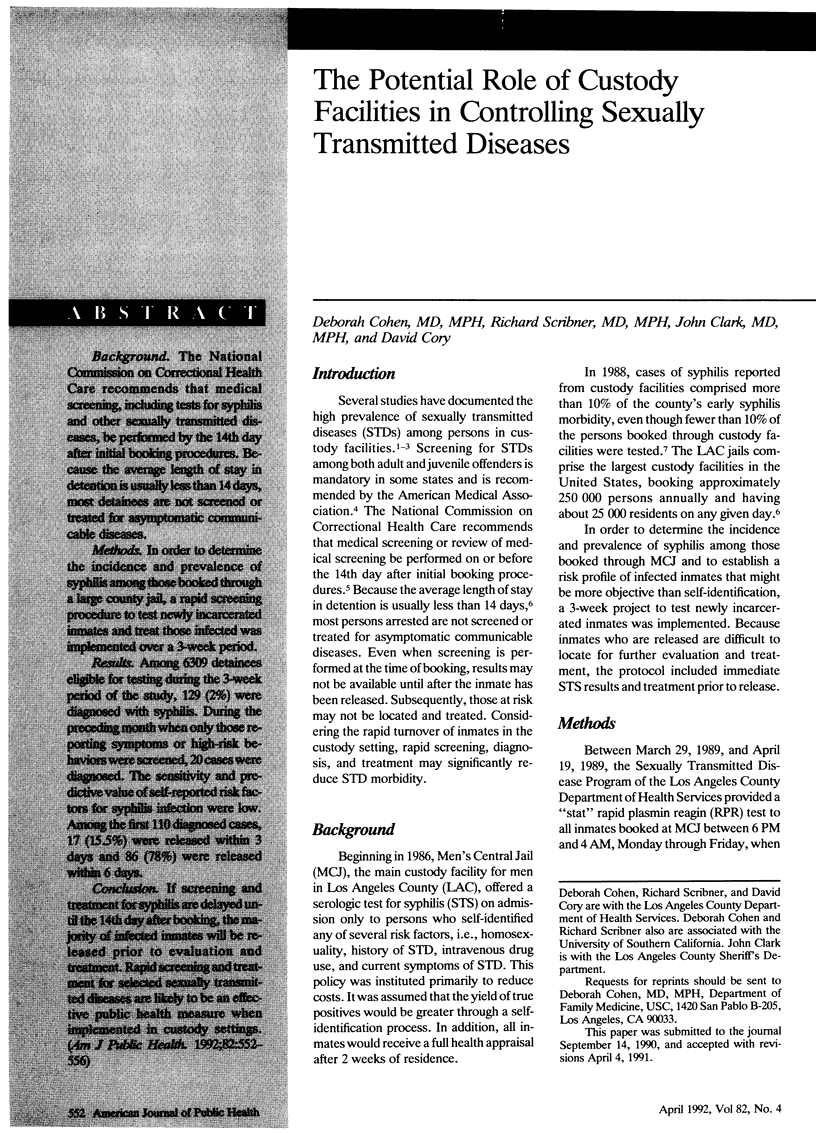
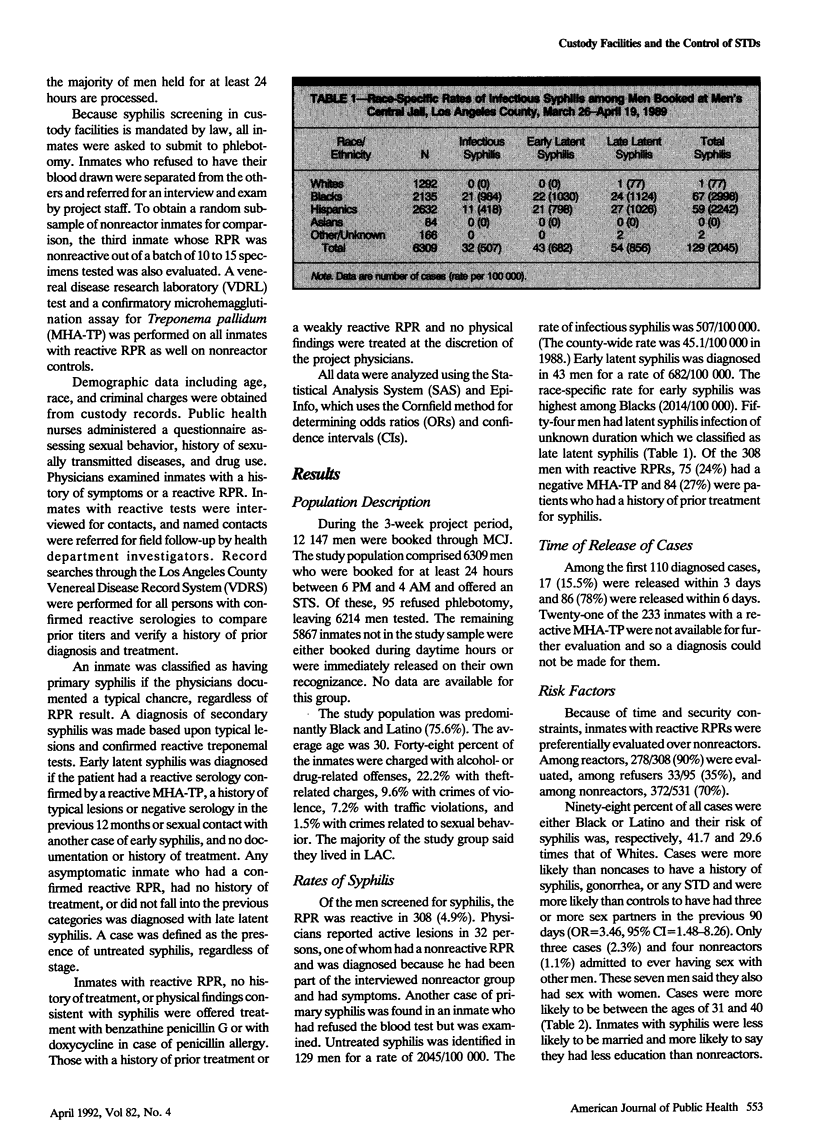
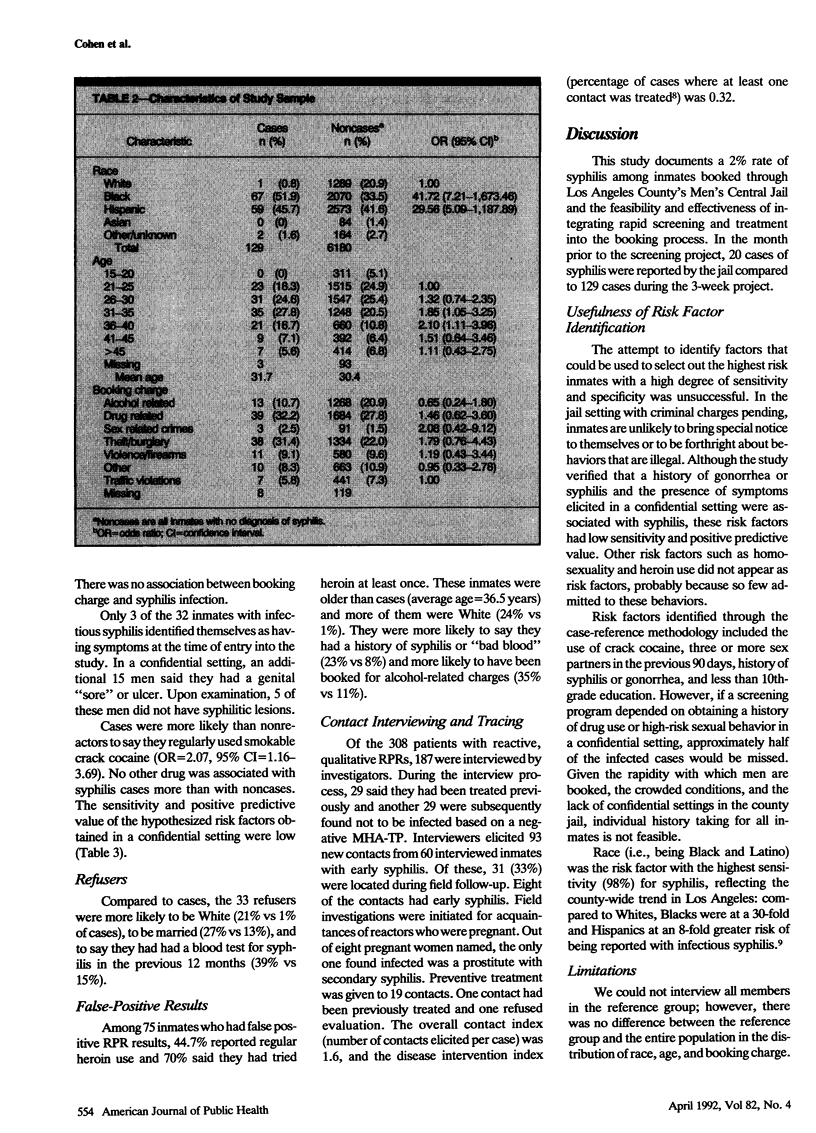
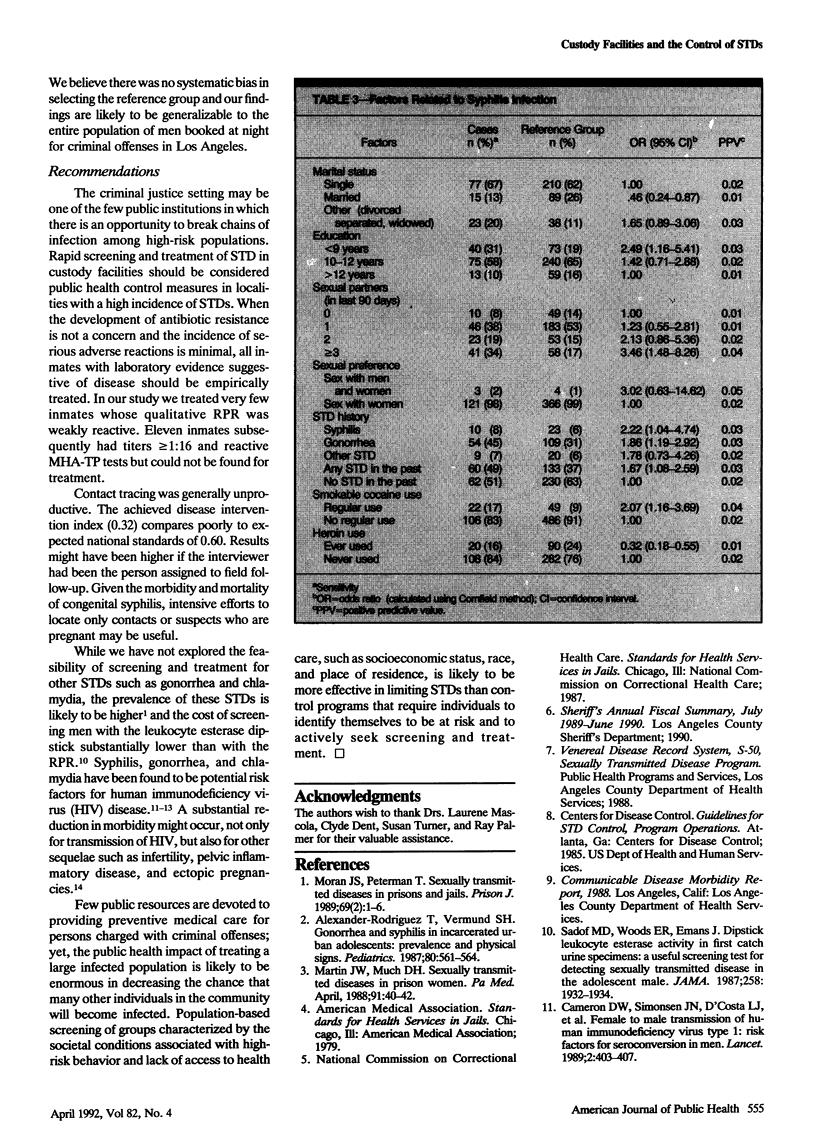
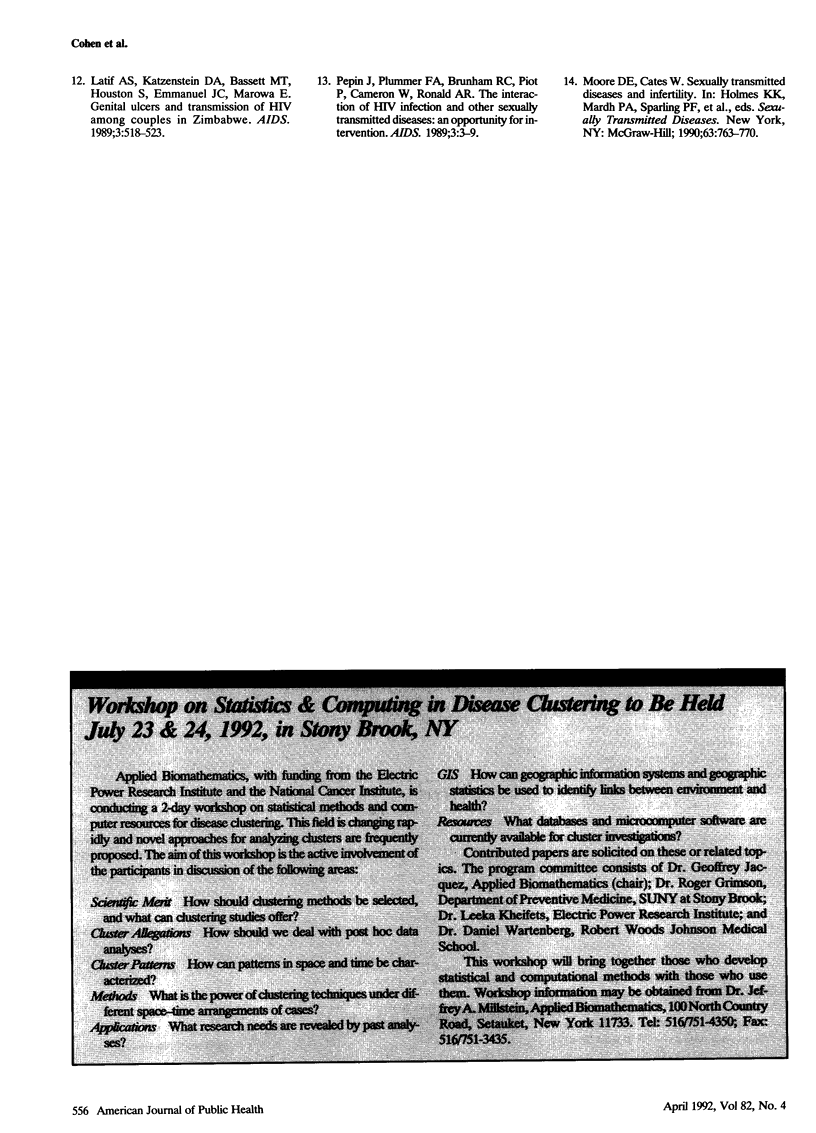
Selected References
These references are in PubMed. This may not be the complete list of references from this article.
- Alexander-Rodriguez T., Vermund S. H. Gonorrhea and syphilis in incarcerated urban adolescents: prevalence and physical signs. Pediatrics. 1987 Oct;80(4):561–564. [PubMed] [Google Scholar]
- Cameron D. W., Simonsen J. N., D'Costa L. J., Ronald A. R., Maitha G. M., Gakinya M. N., Cheang M., Ndinya-Achola J. O., Piot P., Brunham R. C. Female to male transmission of human immunodeficiency virus type 1: risk factors for seroconversion in men. Lancet. 1989 Aug 19;2(8660):403–407. doi: 10.1016/s0140-6736(89)90589-8. [DOI] [PubMed] [Google Scholar]
- Latif A. S., Katzenstein D. A., Bassett M. T., Houston S., Emmanuel J. C., Marowa E. Genital ulcers and transmission of HIV among couples in Zimbabwe. AIDS. 1989 Aug;3(8):519–523. doi: 10.1097/00002030-198908000-00006. [DOI] [PubMed] [Google Scholar]
- Martin J. W., Much D. H. Sexually transmitted diseases in prison women. Pa Med. 1988 Apr;91(4):40–42. [PubMed] [Google Scholar]
- Pepin J., Plummer F. A., Brunham R. C., Piot P., Cameron D. W., Ronald A. R. The interaction of HIV infection and other sexually transmitted diseases: an opportunity for intervention. AIDS. 1989 Jan;3(1):3–9. [PubMed] [Google Scholar]
- Sadof M. D., Woods E. R., Emans S. J. Dipstick leukocyte esterase activity in first-catch urine specimens. A useful screening test for detecting sexually transmitted disease in the adolescent male. JAMA. 1987 Oct 9;258(14):1932–1934. [PubMed] [Google Scholar]


